Many people say The Power of Now changed their life and helped them have more inner peace. Many others say it is a book of nonsense ramblings. But who is right?
I can see where the criticism of this book comes from. While reading The Power of Now, sometimes it is hard not to be distracted by the very “new agey” language that Eckhart Tolle uses. For example, what does he really mean by “dimensions of consciousness”? And is it really possible for mental practices to make the “molecular structure” of your body less dense, as he claims?
However, I still think it’s a brilliant book, even if there are a few questionable paragraphs. When I was 16 years old, I was a very anxious, neurotic teenager. Then I stumbled across The Power of Now. I tried some of Eckhart Tolle’s exercises for thinking less and living in the present moment. And guess what? They really did make my immediate experience of life very different. I was able to move past a lot of the strong anxiety that I felt because I had created space between myself and my neurotic negative thinking.
Looking back, I now understand this book was essentially my introduction to mindfulness and meditation techniques—Which science has proven to give many benefits for mental and physical health. (HealthLine)
I believe some people misunderstand this book’s message because they see it as abstract philosophy. But Eckhart Tolle is almost always saying things that are meant to be practical. You can immediately apply most of his ideas and you will shift your focus or experience of life, even as you’re reading the book.
Who is Eckhart Tolle?
Eckhart Tolle (author site) was born in Germany and educated in England at the University of London and Cambridge University. He was miserable, suffering from anxiety and suicidal depression. Then at age 29, Eckhart had a spiritual breakthrough that gave him deep inner peace. He famously spent a couple years sitting on park benches fully content with his life.
Later Eckhart tried to understand what happened to him. He discovered it was a type of spiritual experience that many past religious teachers wrote about. He began giving talks and answering questions for spiritual seekers. The Power of Now was based on those talks. Only 3,000 copies of the book were originally published, but 5 years years later Oprah discovered and heavily promoted it. The book hit the bestseller lists and become a huge influence.
🧠 1. Watch Your Thoughts: Creating space from our nonstop mental chatter
The subtitle of this book is “A Guide to Spiritual Enlightenment.” Most of us probably see enlightenment as some impossible achievement, but Eckhart Tolle says it is not. The Buddha described enlightenment as simply the end of suffering.
Much of the suffering that we experience is unnecessary. It is caused by our thinking, which make us anxious about the future or regretful about the past. Yet we cannot really predict the future or change the past. So most of our thoughts are repetitive, stale, negative and useless.
Most of us believe that we are in control of our thoughts. However, Eckhart says maybe that isn’t really true. If you tried to stop thinking, could you? For more than a few seconds? Probably not. So maybe it is more accurate to say we all have a Thinker in our minds. This Thinker is constantly commenting, judging and labeling everything around us.
Eckhart Tolle’s first important spiritual practice is to watch your thinking. Almost like you’re watching thoughts passing through someone else’s mind. An important tip is not to judge what you see, calling some thoughts good and others bad. Simply pay attention and notice what happens in your mind.
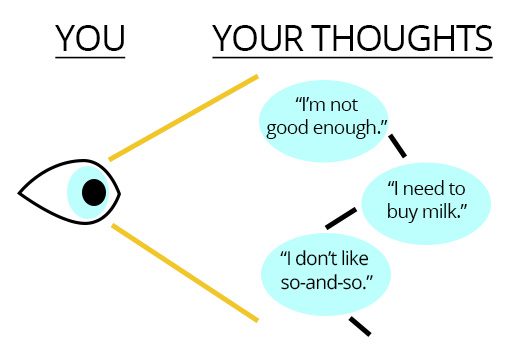
This practice of watching helps us create space between ourselves and our nonstop mental chatter. Over time, you’ll feel more in control in your emotional state because your automatic thoughts will not be able to push and pull you around so easily. Maybe you’ll begin to experience some moments of silence when the voice in your head stops and the outside world suddenly feels more bright, vivid and alive. That is the power of Now.
Watching your thinking is actually an ancient meditation technique. I first began doing this practice over a decade ago by sitting down for about 20 minutes every morning. At first, the changes were subtle, but after a few weeks I felt a lot more emotional stability and mental clarity. It reminds me of something the habits expert James Clear wrote, “Changes that seem small and unimportant at first will compound into remarkable results if you’re willing to stick with them for years.” (And if you want to create a new habit like meditating every day, then his book is a great guide.)
A lot of unnecessary suffering is created by our thinking, when it is repetitive and useless. Most of us are not in control of that voice in our head which is always judging, labelling and commenting. Eckhart’s first spiritual practice is to carefully watch your thoughts and see what happens.
💔 2. Identify Your Pain-Body: Pain from our past lives on inside us
Have you ever seen someone emotionally react way too strongly to a situation? Maybe the reason was their pain-body.
The pain-body is a mental and emotional pattern that people carry inside. It’s like the leftovers of all the past pains, hurts and traumas that we suffered. This pain-body can often disturb our life because it make us emotionally react very strongly, especially if a situation resembles a memory of past pain. When someone’s pain-body becomes activated, it takes control and transforms their personality into someone very different.
To gain freedom from our pain-body, we must not fight the reactions but simply watch them. See the pain-body’s reaction as something separate from you. Eckhart calls this “dis-identifying” with the pain-body, similar to what we did watching our Thinker. Over time, this will starve the pattern of energy and we can regain control over ourselves. Some people may find this difficult because an important source of their identity is… their past pain. Even though it causes a lot of unhappiness and suffering, they may be reluctant to let that go.
The pain-body can play a large role in our romantic relationships, particularly when they break down into misunderstanding or conflict. The pain-body can cause someone to viciously attack their partner when the other person doesn’t act exactly how their ego wants. Creating some distance from our past pain-body will allow us not to lash out impulsively as often. We can also offer an open accepting space that diffuses negativity coming from our partner’s pain-body.
In his fantastic book The Four Agreements, Don Miguel Ruiz says the biggest mistake we make in relationships is assuming others see the world as we do. In fact, it is impossible for us to really predict how other people will react to us because they have complex patterns inside them like their past pain-body. But we can follow Ruiz’s rule to “Not make assumptions” when our partner reacts in a way that is surprising or upsetting. He also wrote, “Real love is accepting other people the way they are without trying to change them.”
Read more in our summary of The Four Agreements by Don Miguel Ruiz
The pain-body is a mental and emotional pattern inside us that makes us react very strongly, especially when a situation resembles a past pain we suffered. Don’t fight the pain-body, but simply watch it. Over time this lack of personal involvement deprives it of energy.
⏳ 3. Be in the Now: Your past and future are mental simulations
Most of us spend our days completely occupied by thinking, which means we are living in either the past or the future:
- We’re living in the past when we remember, relive or regret. Some people get their identity by endlessly ruminating over the past. Yet in the end, it’s a useless cycle because we can’t change what happened to us or what others did to us.
- We’re living in the future when we worry, imagine or hope. If our future projections are negative, then we feel fear, worry and stress. If they are positive, we imagine something in our future will bring us relief from our discontent, like a new possession, relationship or life situation. But as Jesus said, worrying cannot add one hour to our lives. And people are often disappointed when they get what they wanted but they don’t feel much different.
Eckhart Tolle says both the past and the future are illusions, not real. This is not meant to be a philosophical statement that we intellectually debate, but a simple observations that you can confirm with your own direct experience.
Right now, re-connect with your senses. Look around at the objects around you and notice all the details, without making any mental commentary or judgement. Just look and notice. Feel the texture of your clothes on your body. Notice some sound in your environment that you had been ignoring.
That is what Tolle means by “living in the present.” It is not about being irresponsible, but connecting to the physical and real world around you. You can still plan for the future or learn from your past mistakes, but remain rooted to the present moment rather than getting lost in an imaginary mental life.
The popular Buddhist teacher Thich Nhat Hanh says ruminating over the past is unwise because it leads to more suffering. He wrote, “We chew the cud of our suffering, our despair, like the cows chew the regurgitated grass. Every time we think about being abused, we are abused once again. But actually that is not happening now; it is all over. Thinking like this, we can be abused every day, even though our childhood may have had a great deal of happiness and sweet moments. We ruminate on our hatred, suffering, and despair and it is not healthy food.”
Hear more in our summary of The Heart of the Buddha’s Teaching by Thich Nhat Hanh
The past cannot be changed, but ruminating over what happened adds to our suffering. The future is unpredictable, but imagining what may happen adds to our fear, worry and stress. So we must live in the present. Re-connect to your senses and notice the colors, textures and sounds of the physical real world around you.
👋 4. Feel Your ‘Inner Body’: Our senses connect us to the present
Your body can be a powerful and convenient tool to shift your attention back to the present moment. Eckhart Tolle shares some great mindfulness techniques related to body-awareness or what he calls ‘feeling your inner body’:
- Pay attention to your breath, as it’s coming in and out. You don’t need to change how you breathe, just notice all the subtle sensations of it. This happens to be one of the most ancient meditation practices.
- Place your focus inside different areas in your body, and notice what you feel. It may be very subtle at first and that’s okay.
- Remain connected with your inner body all the time. Eckhart Tolle says our eventual goal should be to always have some attention inside our body. This will allow us to remain connected to the Now.
One of the best books ever written on trauma is The Body Keeps the Score by Bessel Van der Kolk. He says the foundation for mental healing is being aware of what’s happening inside ourselves. In fact, when Van der Kolk begins working with a new patient suffering from trauma, his first step is helping them get back in touch with their physical senses again. He is always telling his patients to notice what sensations they are feeling in their body, even if it seems unimportant like subtle tingling or tension.
Learn more in our summary of The Body Keeps the Score by Bessel Van der Kolk
Many powerful mindfulness techniques rely on body awareness. Pay attention to your breathing, pay attention to how various parts of your body feel inside, and eventually try to maintain this awareness all day long.
🧘 5. Accept What Is: Moving from resistance to ease
Imagine there was some noise in your environment like loud construction. (Right now there is construction happening across the street from me, so this is not very imaginary!) Most people would want to noise to go away and they would feel annoyed. Eckhart Tolle would call that annoyance a form of resistance. We are resisting what is, meaning we want the outside world to be different, so we make ourselves feel some negativity inside.
Resistance is a mild feeling of not being at ease and it is often at the back of our minds. Sometimes resistance becomes more acute when we are overtaken by thoughts that are judgmental, resentful, complaining and we feel generally miserable.
Here’s how to overcome resistance:
- First we must see how useless it is. No matter how annoyed or irritated we feel, it does not change our outer situation, not even by a little bit. Resistance only creates additional layers of suffering for ourselves.
- Then we must practice acceptance. Fully accept whatever situation you’re in, not wishing it was any different. Suddenly you will find yourself feeling a lot more relaxed and at ease. This is not about giving up. Instead, practicing acceptance frees up a lot of our mental energy, so we can better change what we have the ability to change in our lives.
If you find your here and now intolerable and it makes you unhappy, you have three options: remove yourself from the situation, change it, or accept it totally.
Resistance is feeling chronically discontent or not at ease with how things are. It includes thinking that is judgmental, resentful and complaining. To dissolve resistance, we must see how useless it is and then we must totally accept our current circumstances.
Conclusion
As I said in the very beginning, some people find The Power of Now life-changing, and others believe this book is total gibberish. In this summary, I’ve tried to highlight some of the most impactful and practical lessons from Eckhart Tolle.
To really understand this book, you now need to practice these techniques in your own life. Find out if they bring you a better state of mind and more clarity. To end this note, I’ll share with you one of my favourite quotes, which para-phrases the Buddha: “No one saves us but ourselves. No one can and no one may. We ourselves must walk the path.”

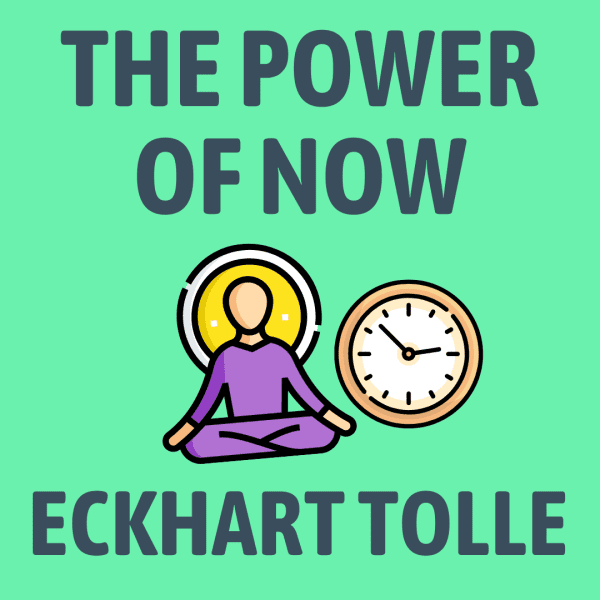




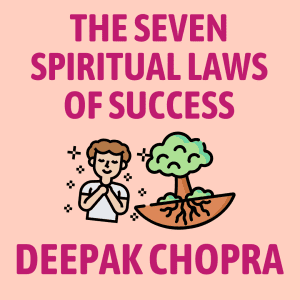
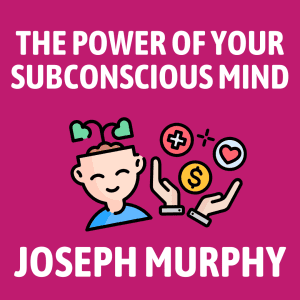










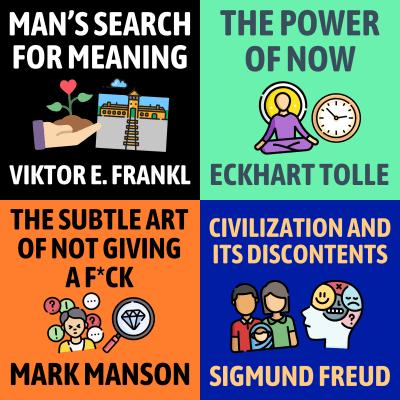















Community Notes